Surveying for the reptiles and amphibians (herps) can be complicated. Different species like to hang out in different habitat types, such as standing water, running water, sloughs, prairies, or woodlands, and few trap types are effective at capturing a wide range of species. Cover boards, for example, are great for surveying many snakes, which like to get warmed up and stay protected underneath, but don’t work for many species or larval forms that live only in water.
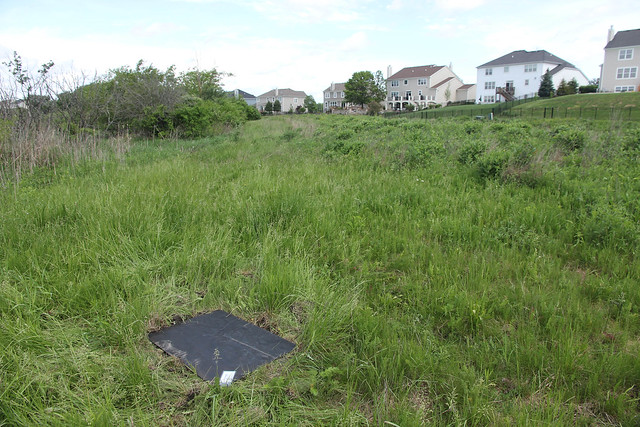
Commonly used methods to capture the full array of herp diversity include cover boards, aquatic turtle traps (floating, hoop), drift fences, funnel traps, pitfall traps, calling surveys, and general searching, which may include roadside surveys, dipnetting, or flipping over logs, rocks, or other microhabitats where many species live. A 2009 study found that using only traditional methods resulted in finding significantly fewer species than when less commonly used (and often less expensive) “secondary” and “tertiary” methods were implemented (Hutchens & DePerno).
Treefrogs in particular are difficult to survey using traditional methods because they can climb out of or over most traps. As such, as part of some reptile and amphibian surveys we are implementing this summer, we have included PVC pipe refugia (hiding places) for treefrogs at our project site. While not a statistically viable experiment, we chose four different sizes of pipe (ranging from 3/4” to 1.5” in diameter) to see, anecdotally, which the two species of tree frogs found in our area might prefer. They are hung with rope, 4 on each tree.
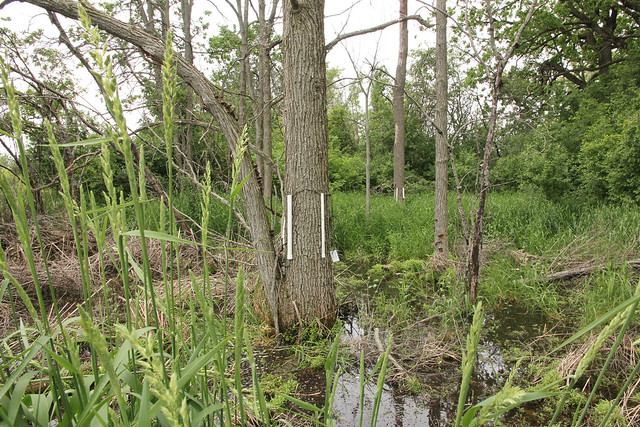
The PVC pipes are capped at the bottom so that they collect water and provide a high humidity and protective hiding spot for the frogs (Boughton & Staiger 2000).
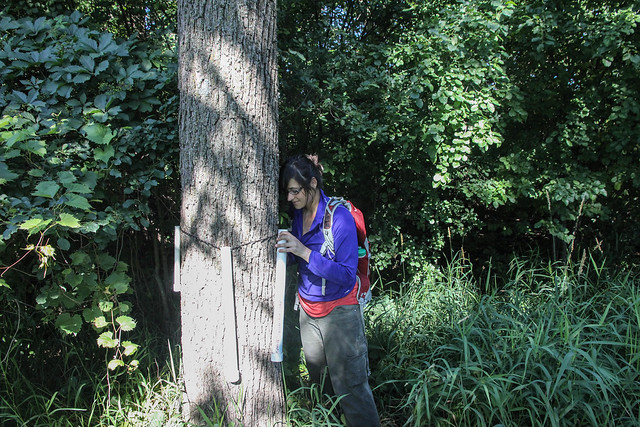
Here is the beauty we found during our first round of checking the traps.
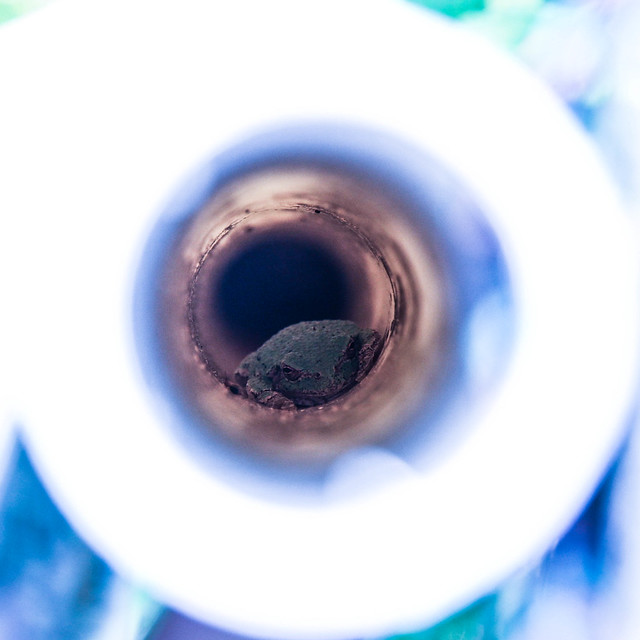
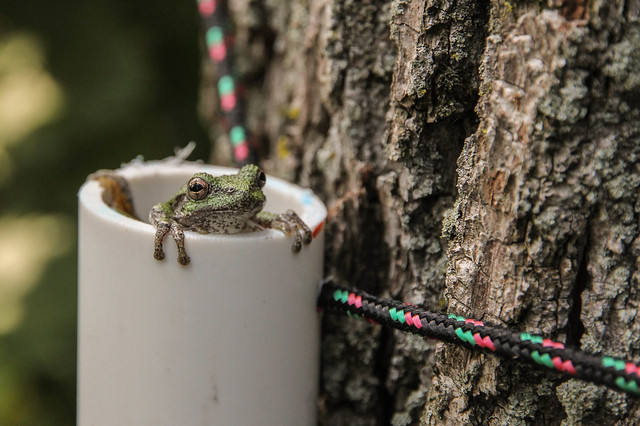

References Et Cetera
Boughton, R. G. and J. Staiger. 2000. Use of PVC Pipe Refugia as a Sampling Technique for Hylid Treefrogs. American Midland Naturalist. 144: 168-177.
Hutchens, S. J. & DePerno, C. S. 2009. Efficacy of sampling techniques for determining species richness estimates of reptiles and amphibians. Wildlife Biology. 15:113–122.
Pittman, S. E., Jendrek, A. L., Price, S. J., and M. E. Dorcas. 2008. Habitat Selection and Site Fidelity of Cope’s Gray Treefrog (Hyla chrysoscelis) at the Aquatic-Terrestrial Ecotone. Journal of Herpetology. 42 (2): 378-385.
Staiger, J. S. and Boughton R. G. 1999. Factors affecting hylid treefrog use of PVC refugia in north central Florida. Presented at the 1999 Joint Meeting of the American Society of Ichthyologists and Herpetologists, American Elasmobranch Society, Herpetologists’ League, and Society for the Study of Amphibians and Reptiles, Penn State University, State College, Pennsylvania.
A guide for teachers: Are There Really Treefrogs Living in the School Yard?